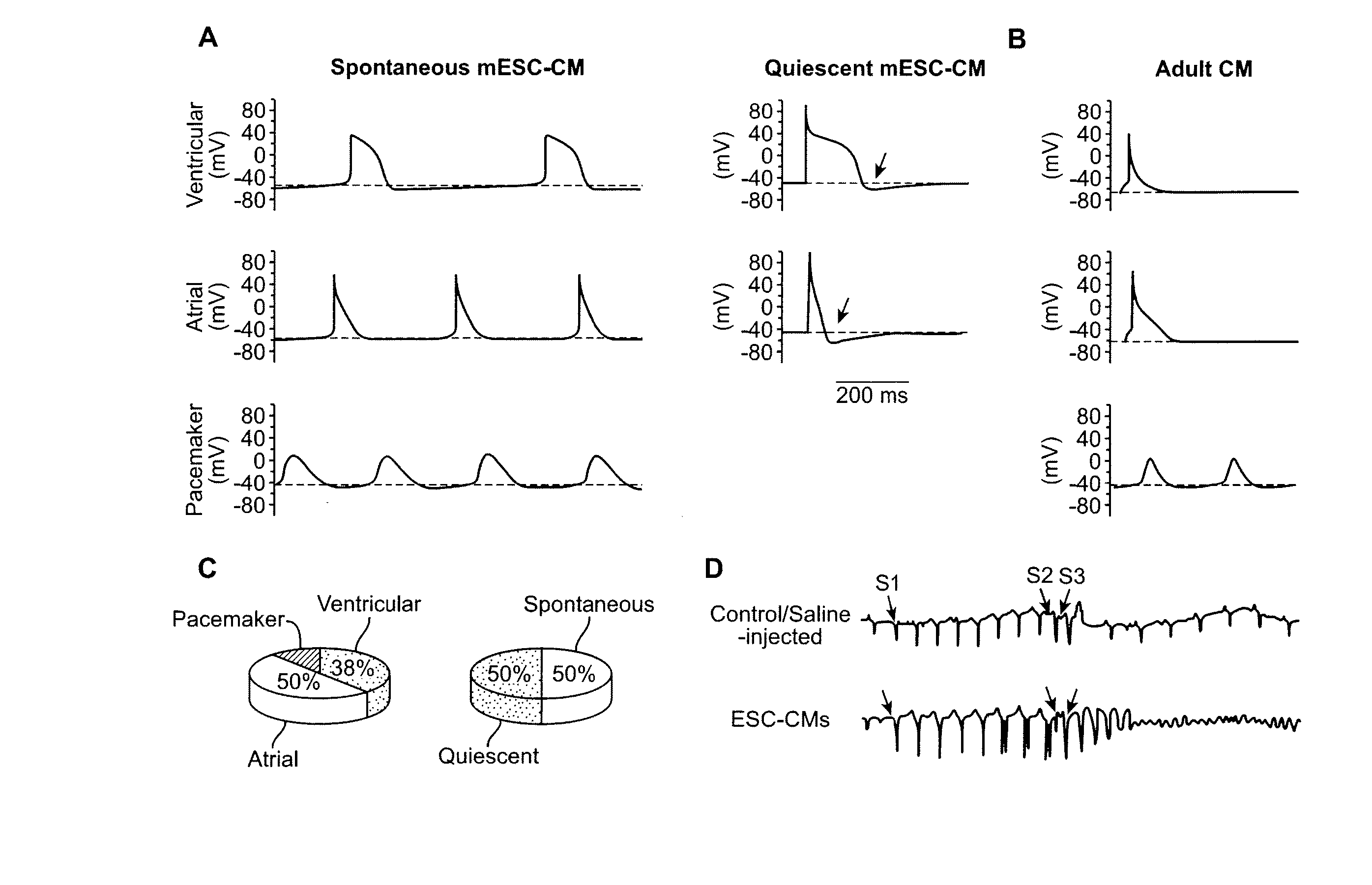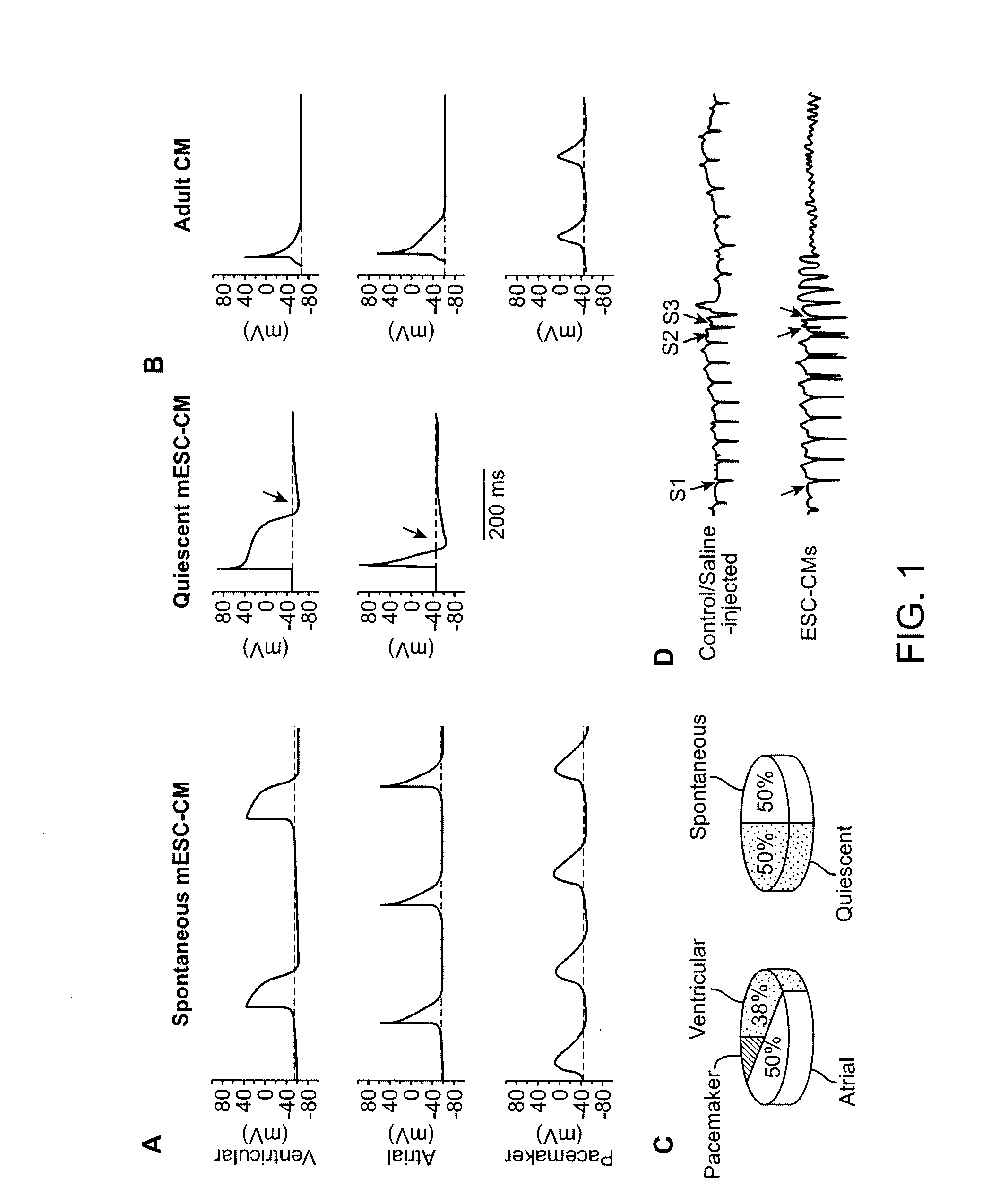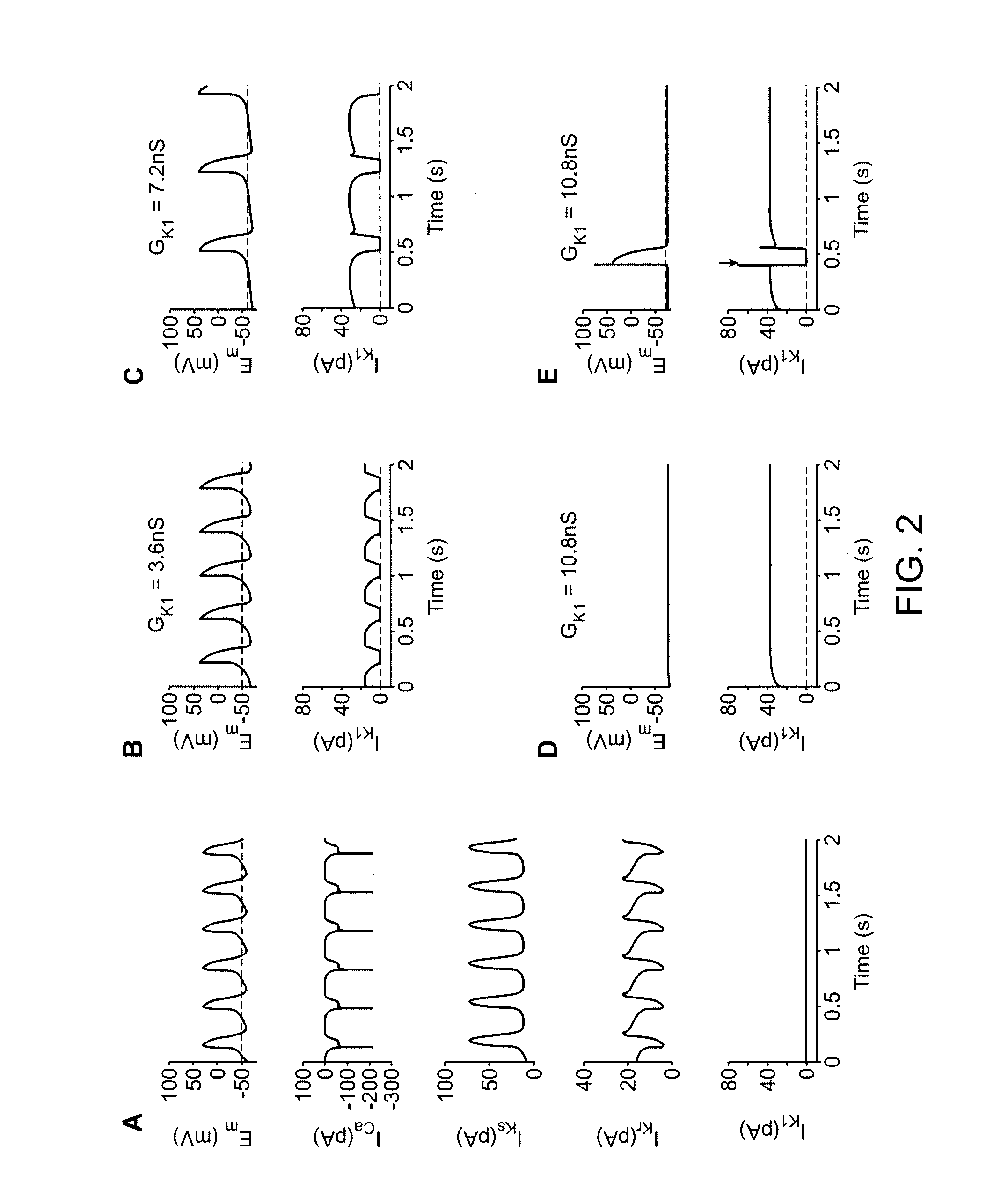Directed differentiation and maturation of stem cell-derived cardiomyocytes
a stem cell and cardiomyocyte technology, applied in the direction of cell culture active agents, cardiovascular disorders, drug compositions, etc., can solve the problems of limited transplantation of end-stage heart failure patients, limited availability of transplantable human cms, and lethal consequences, so as to promote the functional integration of these cells and eliminate or reduce the arrhythmogenicity of immature cells
- Summary
- Abstract
- Description
- Claims
- Application Information
AI Technical Summary
Benefits of technology
Problems solved by technology
Method used
Image
Examples
example 1
[0143] In one non-limiting aspect, Example 1 shows that by first identifying the primary contributor that mechanistically leads to immature and pro-arrhythmic properties, a genetic approach for driven maturation of ESC-CMs was developed. By rendering their cellular electrophysiological phenotype adult-like, post-transplantation arrhythmias in a small (guinea pig) and a large (porcine) animal models was completely ablated. These results can greatly facilitate hESC-based heart therapies by enhancing their safety.
[0144] Circulation requires the highly coordinated efforts of atrial, ventricular, and pacemaker cells. These chamber-specific cardiomyocytes (CMs) differ in their electrical properties which in turn govern cardiac excitability. Pacemaker cells of the sino-atrial node spontaneously generate rhythmic action potentials (AP) that subsequently induce the contractions of atrial and ventricular muscles for effective blood pumping. Because terminally differentiated adult CMs lack th...
example 2
[0171] The present study is focused on mechanistically dissecting the intricate interrelationships between various biophysical parameters of If, IK1, and cardiac automaticity. Using HCN1 constructs that have been engineered to exhibit different gating properties, the functional consequences of their overexpression in adult guinea pig LVCMs and explored the underlying correlations was investigated. These results not only contribute to a better understanding of cardiac pacing but also may advance current efforts that focus primarily on automaticity induction to the next level by enabling bioengineering of central and peripheral cells that make up the native SA node (via a direct gene transfer (71) or an ex vivo stem cell approach (8, 72, 73)).
[0172] If, a depolarizing, mixed Na+ / K+ inward cardiac membrane current encoded by the hyperpolarization-activated cyclic-nucleotide-modulated (HCN1-4) channel gene family, (57) is known to functionally modulate pacing. For instance, human HCN m...
example 3
[0201] If, or ‘funny’ current, encoded by the hyperpolarization-activated cyclic nucleotide-modulated (HCN) channel gene family, plays a pivotal role in cardiac pacing by acting as an intrinsic oscillator that drives diastolic depolarization to the action potential (AP) threshold after each excitation cycle (63, 64, 102). The expression of this current and the absence of a resting membrane potential (RMP) stabilizer, the inwardly rectifying potassium current IK1) (62), are signatures of pacemaker cells that make up the sino-atrial (SA) node. Conversely, IK1 but not If, is robustly expressed in the silent-yet-excitable adult atrial (A) and ventricular (V) cardiomyocytes (CMs) (101, 103). Based on these biophysical characteristics, two genetic approaches, IK1 suppression (36, 59) and If overexpression (69, 96, 100, 102), have been independently experimented to convert normally quiescent CMs into spontaneously AP-firing cells as bio-artificial pacemakers (97). Although the two strategi...
PUM
| Property | Measurement | Unit |
|---|---|---|
| molecular weights | aaaaa | aaaaa |
| ionic strength/temperature | aaaaa | aaaaa |
| conductance | aaaaa | aaaaa |
Abstract
Description
Claims
Application Information
 Login to View More
Login to View More - R&D
- Intellectual Property
- Life Sciences
- Materials
- Tech Scout
- Unparalleled Data Quality
- Higher Quality Content
- 60% Fewer Hallucinations
Browse by: Latest US Patents, China's latest patents, Technical Efficacy Thesaurus, Application Domain, Technology Topic, Popular Technical Reports.
© 2025 PatSnap. All rights reserved.Legal|Privacy policy|Modern Slavery Act Transparency Statement|Sitemap|About US| Contact US: help@patsnap.com



